Lop Nur contains unbelievable legends mixed with real life stories. But, no one has really conquered Lop Nur yet.
Lop Nur seems to be prohibited zone of life. This place carries countless mysteries and dangers. The proof is that Lop Nur destroyed the ancient civilization Lou Lan, Niya.
Lop Nur buried the famous Chinese scientist Peng Jiamu and explorer Yu Chunshun. The fact that nature here loses connection with humans makes finding the truth even more difficult.
Lop Nur is located in Ruo Khuong, Xinjiang, once the second largest inland lake in China, after Qinghai. Located east of the Tarim River basin on the ancient “Silk Road”, Lop Nur is rumored to be mysteriously like the “devil’s triangle” of Asia.

The ancient “Silk Road” buried countless ghosts, ghosts, and dead bodies scattered everywhere. The legends continue to cover the mysterious, ghostly mounds of this “Dead Sea” area: “There are many ghosts in the sand river, hot wind, those who meet will die, there is no way back…” In Lop Nur, anything unbelievable can happen.
In 1972, the Landsat 1 satellite was launched. It sweeps across the Earth’s surface. At that time, a huge “human ear” appeared in front of the media, surprising many people.
The “ear” is about 60km long and about 30km wide with many semicircular lines alternating between light and dark colors. It bends at the center, like the “ear of the Earth”.
No one knows what created this strange shape, it is only known that the place where the “ear of the Earth” appeared is in Lop Nur.

In 1876, the house explore Russian Przewalski to Lop Nur. In 1901, the Swedish geographer Sven Hedin accidentally awakened the ancient city that had been dormant for thousands of years here. That’s Lau Lan.
Later, people unearthed a mummy known as “Lau Lan Beauty” that shocked the world. Countless explorers, scientists, tourists were fascinated by the information and set out to conquer Lop Nur. They even sacrificed their lives.
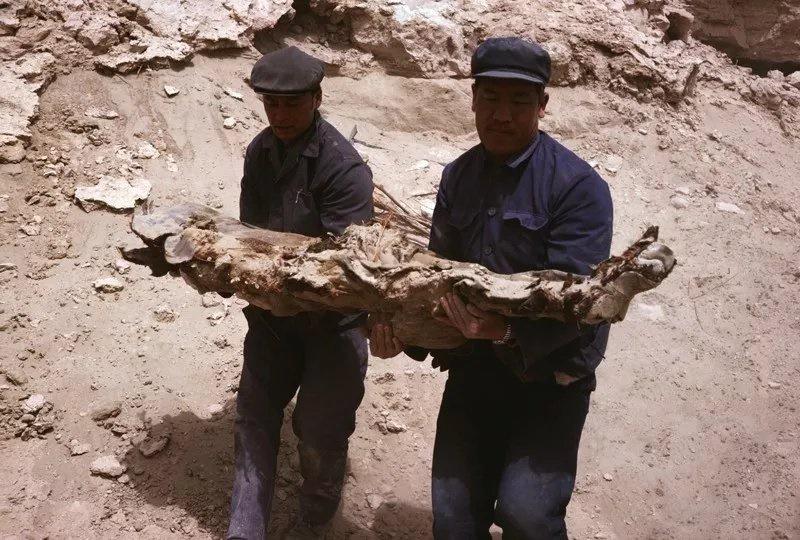
Lop Nur is the treasure of Lou Lan people
Before being deserted, Lop Nur used to be a rich place with abundant water. 5000 years ago, the Tocharians – a branch of the people of Western Europe began to migrate to the eastern land with many countries. They settled here when they found a lush oasis in Lop Nur beside birch forests.
According to ancient texts, the early inhabitants of Lop Nur imported millet from the East and wheat from the West. They farm on oases.
At that time, they also formed their own religion. And thanks to the poplar tree, they had raw materials to make statues for their spiritual life.
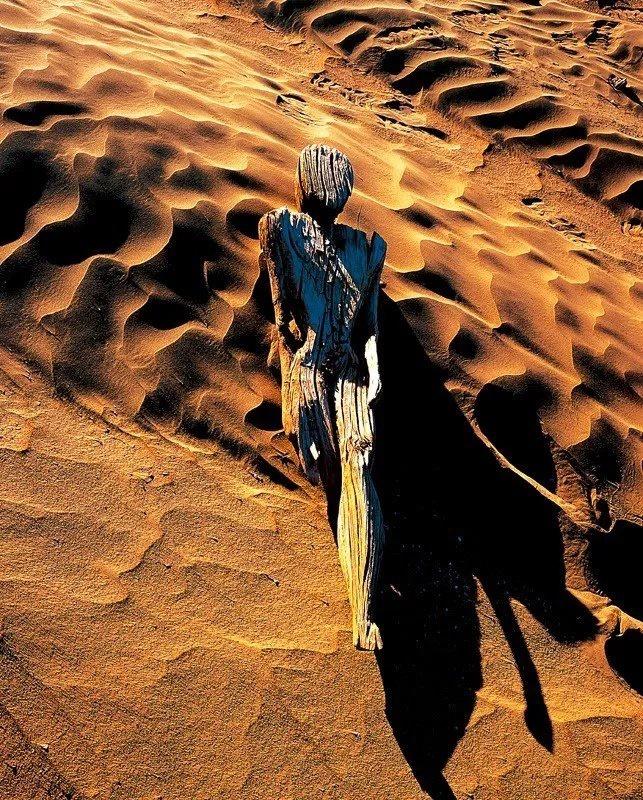
For some reason, the story of the ancient people ended abruptly 3,500 years ago. Until 176 BC, a small country in the Western Region suddenly appeared in the history books of the Western Han Dynasty. That’s Lau Lan. Because Lou Lan is generally considered the Xiongnu.
In Vuong Xuong Linh’s poem “Conscription March 4”, there is a sentence:
“Qing Hai long clouds cover the snowy mountains
The citadel that can be seen in the distance is Ngoc Mon Quan
Fight hundreds of battles in this golden sand desert, wearing down your armor
If the Lau Lan invaders have not been defeated, they will not return.”
In addition, poet Li Bach in the poem Quan San Nguyet also mentioned:
“The bright moon rises on Tianshan mountain
In the vast landscape between clouds and sea
The wind blows thousands of miles back
Blow to the gate of Ngoc Mon”.
In 126 BC, Truong Khien went to the Western Region to bring back a report: “There is a city in Lou Lan and Yanze (Lop Nur)”. So at that time, the Han Dynasty sent soldiers to cross the Ngoc Mon pass, driving the Xiongnu out of the western region.
It was from that time that the “silk road” became more popular and Lau Lan – the place holding the water source of Lop Nur also became the center.
Lau Lan’s heyday was associated with the beautiful Lop Nur, right from its history. Lau Lan is a place of cultural interference between East and West. Even in the records of Tang Xuanzang who passed through this place in 645 AD, Lou Lan’s prosperity had already vanished.
Maybe it was due to foreign invaders, because of the “silk road” redirection, even the epidemic caused Lau Lan to decline. But it is indispensable to cause natural environmental degradation leading to the drying up of Lop Nur.
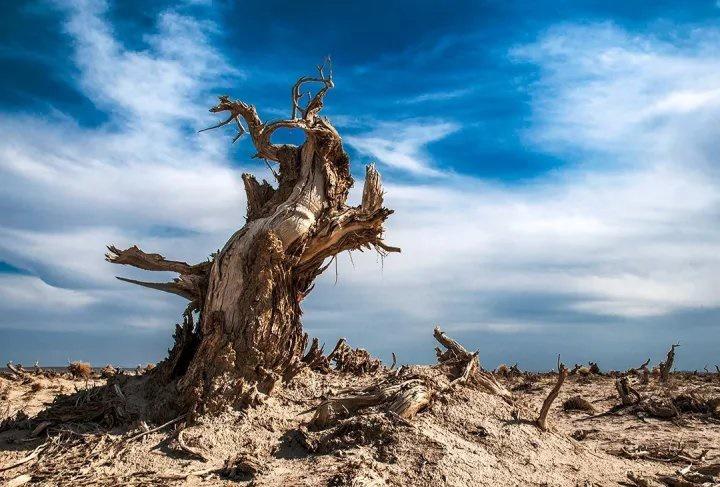
The climate becomes dry and cold, the temperature difference between day and night is large. In particular, the death of the poplar tree causes the vegetation in this place to be reduced.
The rivers dried up, Lop nur lake gradually shrunk. Increased desert, raging strong winds, sandstorms, erosion caused the formation of many yardang terrain valleys. This is the terrain that causes many mysteries in Lop Nur.
“Forbidden Zone of Life”
Until now Lop Nur is still a land of many mysteries of China. The environment in this region is barren, arid, hot, and complex. However, the more magical and wilder the legends are, the more people they attract to come here.
Many people think they can dig up the treasures of the ancient country Lou Lan. It is also for this reason that many people are forever lying in the vast sand sea, unable to find their way back home.
In the past, Lop Nur used to be a beautiful and vibrant land. However, the erosion of time, and climate change make the amount of water less and less, leaving only deserted deserts and dry yardang mounds.
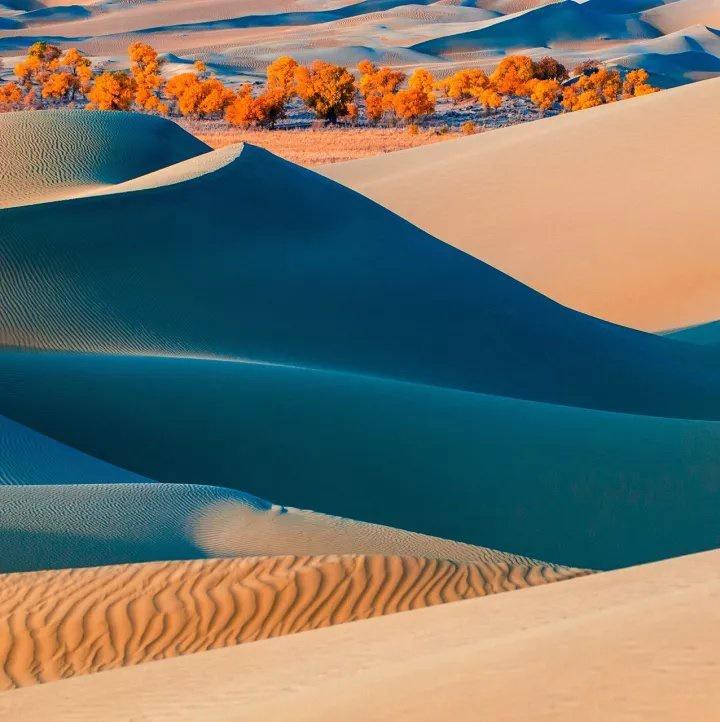
During the Qing Dynasty, a scholar named Tu Song used to come to Lop Nur. And he wrote in “History of the Western Rivers”“that the people here “do not eat grain, but fish for food”‘, “weave thorns for clothes, use goose feathers for blankets”.
This proves that, at that time, people around Lop Nur lake could still live, choosing to hunt for a living.
Stunned in the middle of a thousand years of time, Lop Nur gradually “revived”, although not finding the bright aura like in the wild, but this is a part of life. People are still finding ways to connect with the reality of Lop Nur.
The Rise of the Sacred Land
In an article about the “revival” of Lop Nur, it was mentioned that this place is feeding millions of Chinese people. In 1921, the Tarim River changed its course. By the 1960s, the lower Tarim River had stopped flowing for a variety of reasons.
The water at Lop Nur lake quickly evaporates, and the habitat here becomes more and more arid. Finally, it dried up in 1972. The bottom of the lake became a desert full of alkaline salts, hilly terrain and many other interesting things.
Due to the human exploitation of potassium mines here, Lop Nur becomes an endless salt lake. Modern equipment has gradually revealed the mysterious table in Lop Nur that has been hidden by time for a long time.
Potassium mining projects are underway, floating pipeline plans to transport salt water into the lake. At the same time, the railway route made through Lop Nur marks a new step in learning about this mysterious land.
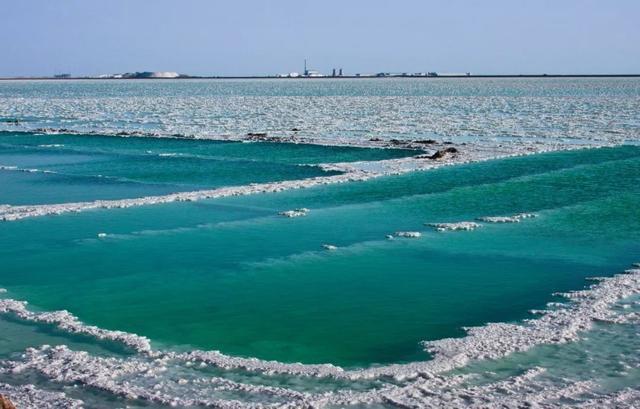
You may be seeing ripples in the clear blue water, but this is actually due to the abundant potassium salts at Lop Nur. For convenient exploitation, people have made an “artificial” water surface with an area of about 200 km2 here. From the pumping station, potassium-rich brine is extracted from the ground and collected in a channel.
Researcher Xia Chuancheng (a colleague of the missing scientist Peng Jiamu in Lop Nur) working at the Xinjiang Institute of Geography and Ecology of the Chinese Academy of Sciences said: “All lakes in geological history have evolved from a period of formation to a peak, then continued for a period of time, then gradually declined.
Human behavior affecting nature is also considered as a form of geological force and is known as anthropogenic geological action. Lop Nur’s recent geological history during the dry period clearly shows that anthropogenic geological impact plays a primary role.”
Also according to Ha Xuyen Thanh, the potassium reserves in Lop Nur are enough to be exploited for about 30 years. So what future will come to Lop Nur, after the ancient Lou Lan has died and the Tieu Ha culture has disappeared?
Maybe, Lop Nur will gradually reveal the secrets, but the mystery of this sacred land will remain forever. Will this “ear-shaped” land “shift” and reveal something unexpected? Let’s watch it together.
According to Vietnamese Women
at Blogtuan.info – Source: 2sao.vn – Read the original article here



